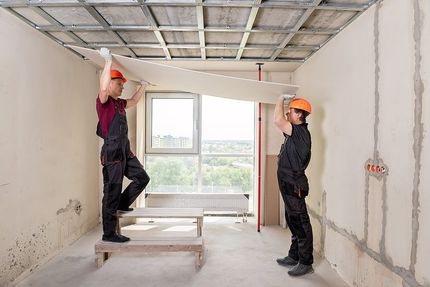Quality Drywall Installation That Changes Your Interiors
Quality Drywall Installation That Changes Your Interiors
Blog Article
Drywall Installment Facilitated: Tips for Perfect Outcomes
Drywall setup is frequently regarded as a difficult job, yet with the ideal approach and understanding, it can become a workable undertaking. Grasping strategies for cutting, hanging, and ending up drywall can significantly affect the outcome.
Selecting the Right Products
Choosing the proper products for drywall installation is vital to achieving a resilient and cosmetically pleasing finish. sheetrock repair fort worth. The primary element, drywall sheets, typically been available in numerous densities, with 1/2-inch sheets being basic for interior wall surfaces. For locations requiring additional wetness resistance, such as kitchens or restrooms, take into consideration making use of green board or cement board, which are specially developed to stand up to moisture

Additionally, selecting the right bolts-- either nails or screws-- is crucial for safeguarding the drywall to the framework. Drywall screws are normally favored for their holding power and decreased danger of popping. Take into consideration the finishing touches such as guide and paint, which not only enhance the appearance however additionally safeguard the drywall from moisture and wear.
Preparing the Setup Area
Before starting the drywall setup process, it is essential to prepare the installment location thoroughly. This preparation includes a number of critical actions to make sure a smooth and successful job. Clear the location of any furnishings, home appliances, or blockages that might prevent gain access to. A clean office reduces the threat of damage to existing things and enables reliable movement throughout installation.
Following, inspect the wall surfaces and ceiling for any kind of imperfections, such as fractures, openings, or mold. Address these problems ahead of time; patch any type of problems and allow adequate time for repair services to completely dry. Additionally, make sure that electric outlets, switches, and plumbing are appropriately placed and accounted for, as this will affect drywall positioning.
Consider the environmental conditions as well. A stable temperature and humidity level are vital for optimal adhesion and performance of the drywall products. If necessary, use a dehumidifier or heater to create ideal problems.
Cutting and Hanging Drywall
The key to efficient drywall installation exists in the specific cutting and dangling of the panels. Begin by determining the area accurately, taking into consideration any kind of blockages such as electric outlets or windows. Use a straight edge and an energy blade to rack up the drywall along your measurements, then break it along the racked up line for a clean break. For more intricate cuts, such as around electrical outlets, a drywall saw can be used for precision.

Constantly function from the top down and left to right, making sure that you maintain a staggered pattern to improve stability. Appropriately hanging the drywall sets the structure for a smooth surface, ultimately bring about premium outcomes in your drywall job.
Taping and Mudding Techniques
While correct cutting and hanging of drywall sets the phase, the following critical step includes grasping taping and mudding techniques to ensure a smooth surface. Taping is vital for reinforcing joints and avoiding cracks; it involves embedding tape into the used joint compound (mud) Begin with a high quality fiberglass or paper tape, applying the tape over the joint and pressing it right into the wet important site mud making use of a taping blade, guaranteeing no air bubbles continue to be.
Once the tape is in place, use a thin layer of joint compound over the tape, feathering the edges to develop a smooth transition to the drywall surface area. Permit this layer click reference to dry totally prior to sanding it lightly to remove flaws. Repeat this procedure, applying added coats of mud as needed-- normally 2 to 3 layers-- while progressively broadening the application area with each layer to achieve a smooth look.
After the last layer dries, sand the surface area with a fine-grit sandpaper till smooth. drywall contractor. Bear in mind to put on a mask during fining sand to stay clear of inhaling dust particles. Grasping these taping and mudding strategies is vital for achieving a professional-quality coating in your drywall installation
Ending Up Touches for Perfection
Accomplishing a flawless drywall installment surpasses taping and mudding; it finishes in the ending up touches that raise the overall appearance. These last steps are important in ensuring a professional-grade coating that enhances the appearances of your space.
Begin by fining sand the dried out joint compound to produce a smooth surface. drywall installation. After sanding, wipe down the wall surfaces with a damp fabric to eliminate any type of dust particles, guaranteeing a clean surface for paint.
Following, use a primer specifically made for drywall. This action is necessary, as it aids seal the joint substance and supplies an uniform base for the overcoat. When the guide dries, evaluate for any type of blemishes, and repair as needed.
Verdict
Finally, successful drywall setup rests on the mindful selection of materials, extensive prep work of the setup area, and exact implementation of cutting and hanging strategies. Mastery of taping reference and mudding processes is essential for attaining a smooth finish. Furthermore, focus to ending up touches, consisting of priming and touch-ups, makes sure a professional-grade outcome. By sticking to these guidelines, the quality of craftsmanship can be substantially improved, contributing to the general aesthetic and capability of the space.
Drywall installment is typically regarded as an overwhelming job, yet with the ideal method and knowledge, it can end up being a manageable venture.Choosing the ideal products for drywall setup is vital to achieving a resilient and aesthetically pleasing coating.Prior to beginning the drywall installment procedure, it is essential to prepare the installation location thoroughly. Mastering these taping and mudding strategies is vital for achieving a professional-quality coating in your drywall installment.
In final thought, effective drywall installment pivots on the mindful option of products, thorough preparation of the setup location, and specific implementation of reducing and hanging strategies.
Report this page